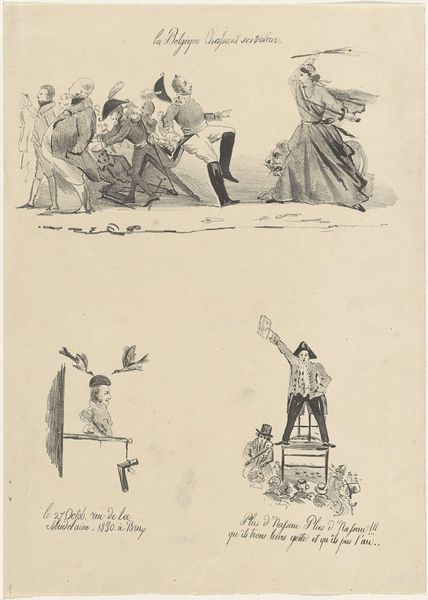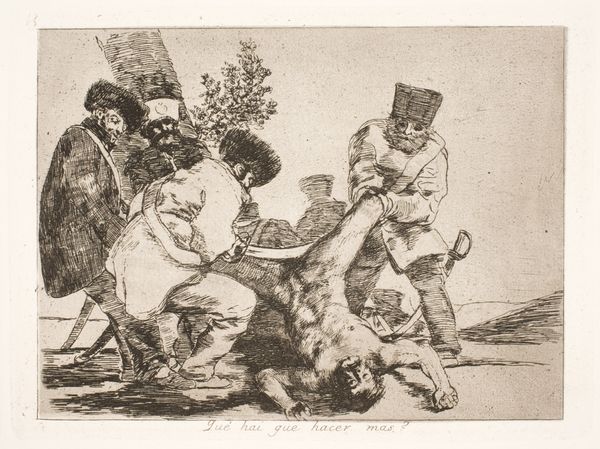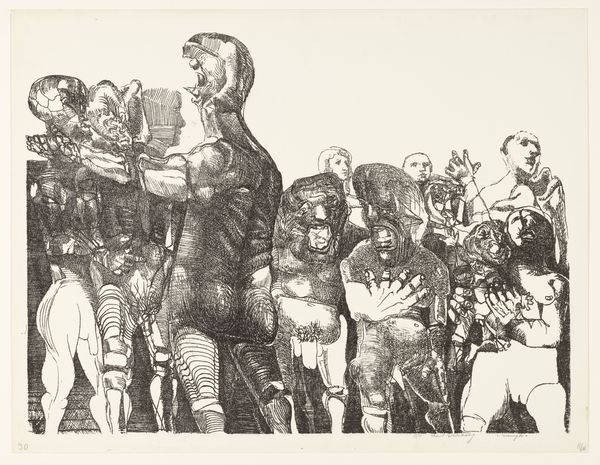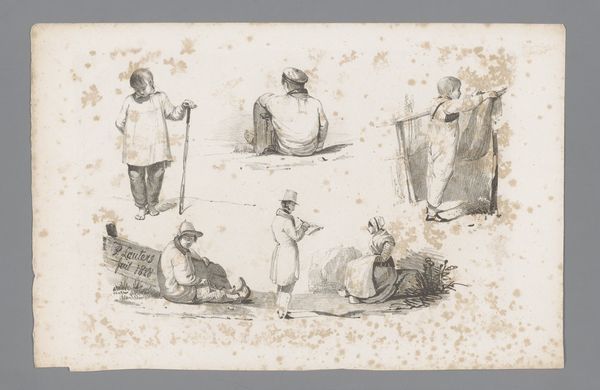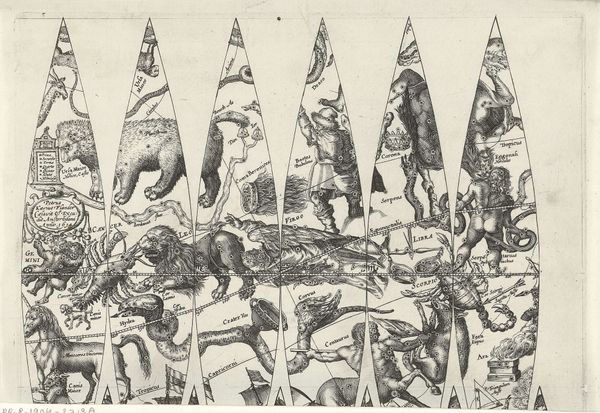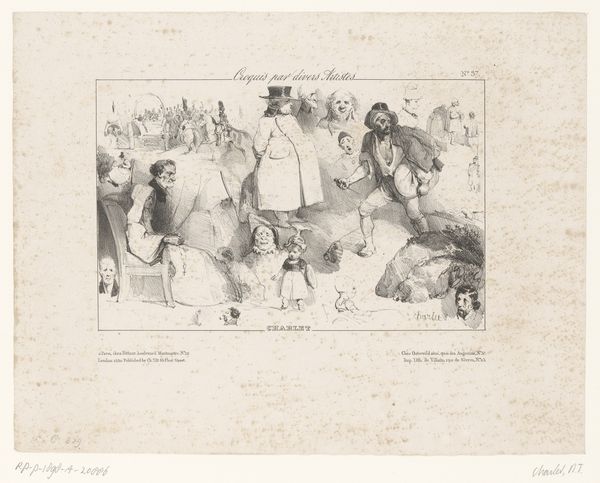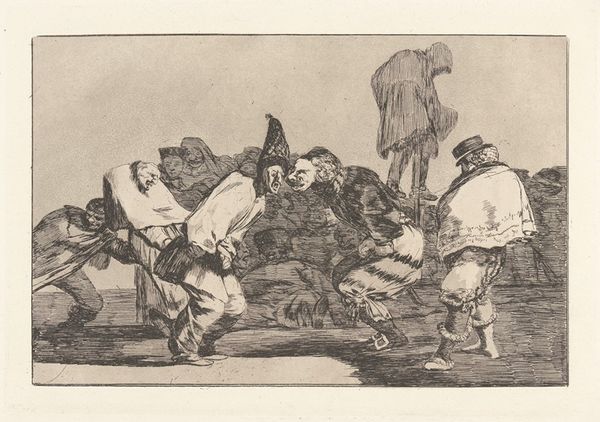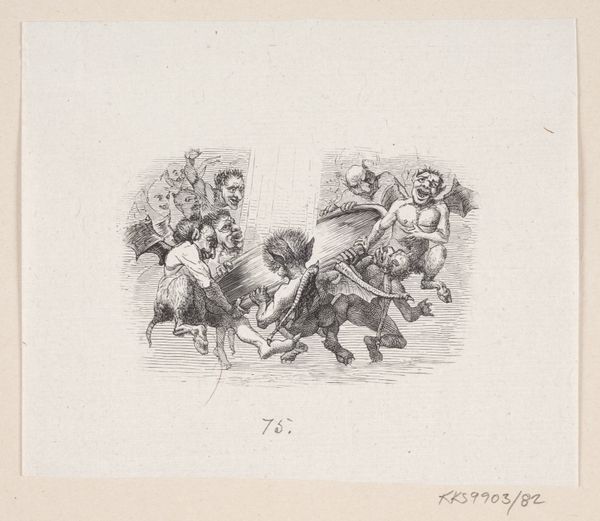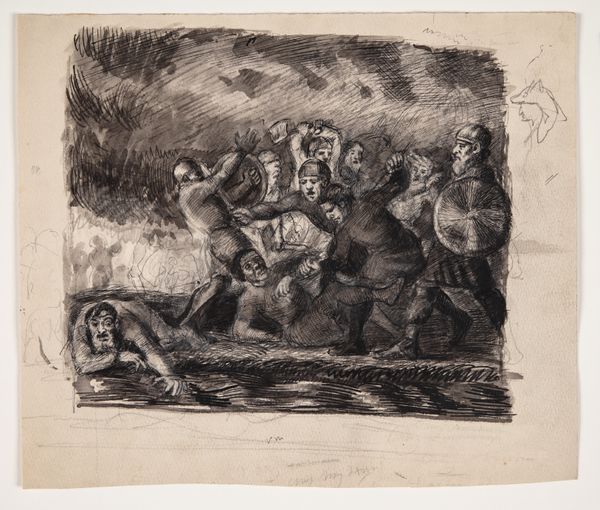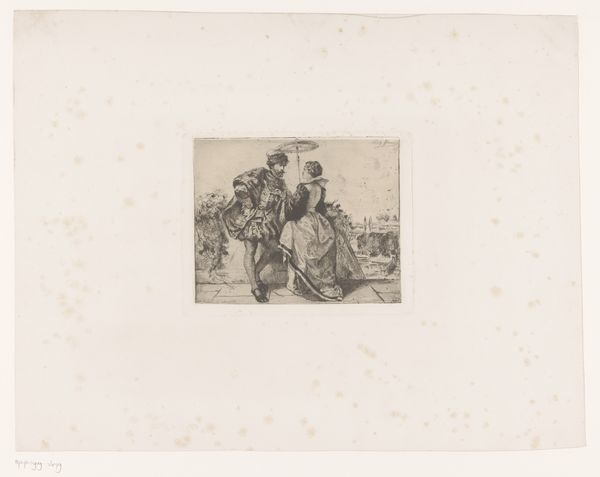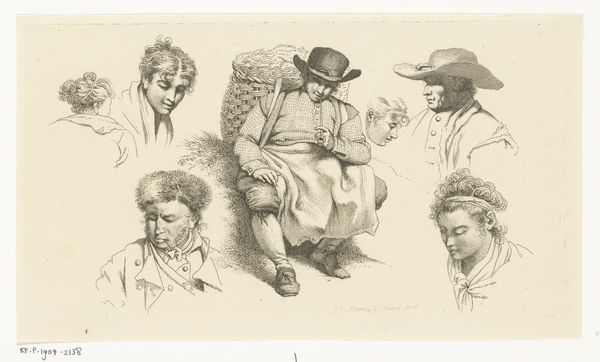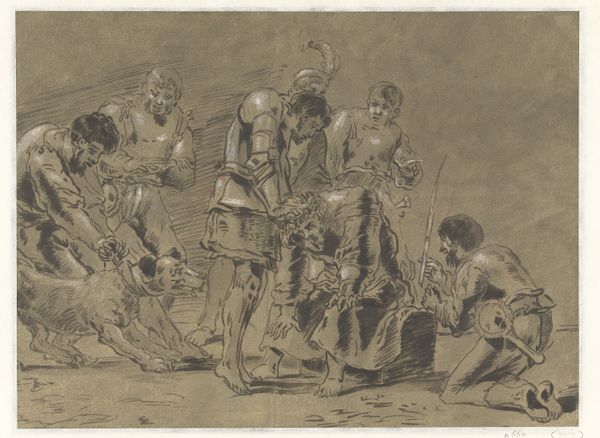
drawing, pen, charcoal
#
drawing
#
narrative-art
#
war
#
landscape
#
figuration
#
pen
#
charcoal
#
modernism
Dimensions: height 269 mm, width 368 mm
Copyright: Rijks Museum: Open Domain
Curator: What a somber scene, isn't it? Willem van Schaik’s "Oogst 1918. Moderne korenschoof," made in 1918 using pen and charcoal. My immediate impression is one of overwhelming exhaustion and inevitability. The figures slump, weighed down...it’s chilling. Editor: Chilling indeed. The stark monochromatic palette certainly accentuates that mood, emphasizing the somber quality you’ve pinpointed. Let’s consider the artist’s compositional choices. Notice how the diagonal line created by the procession pulls the viewer’s eye from left to right, but there's also an unmistakable compression there, as if being pushed toward an unavoidable ending. Curator: Absolutely, the Modernist stylistic influence is unmistakable here. But consider also the broader context: 1918 was a turning point in the First World War. This isn't merely an abstract exploration of form, it’s a powerful socio-political commentary. We see the devastation, the sheer cost of war etched onto these figures and literally represented by the scythe. Editor: The symbolism of Death leading the procession of soldiers is overt but brutally effective. Van Schaik manipulates visual language, offering Death not as a terrifying figure but as a weary shepherd. There’s almost a bureaucratic indifference in that stance that, I think, adds another layer of unsettling commentary on mechanized war. Curator: The use of caricature intensifies this effect. Each face, though rendered crudely, reveals a unique form of suffering, highlighting the individual tragedies subsumed within this collective march. There's even a slight grotesque distortion suggesting the loss of their humanity. Editor: A masterfully grim composition. Van Schaik clearly understands the semiotic power of simple lines, shapes and negative space to convey complex emotions. The open field serves not as a landscape of opportunity but as the stage for a haunting danse macabre. Curator: Exactly. By fusing a historical moment with such striking visual rhetoric, he doesn't simply depict war but also offers an enduring condemnation of its dehumanizing impact. Editor: The way the bleak figuration reflects the artist’s anxieties within the fraught sociopolitical moment certainly makes it a thought provoking work, if a profoundly melancholic one. Curator: Agreed, a small drawing that speaks volumes about war's immense cost.
Comments
No comments
Be the first to comment and join the conversation on the ultimate creative platform.

